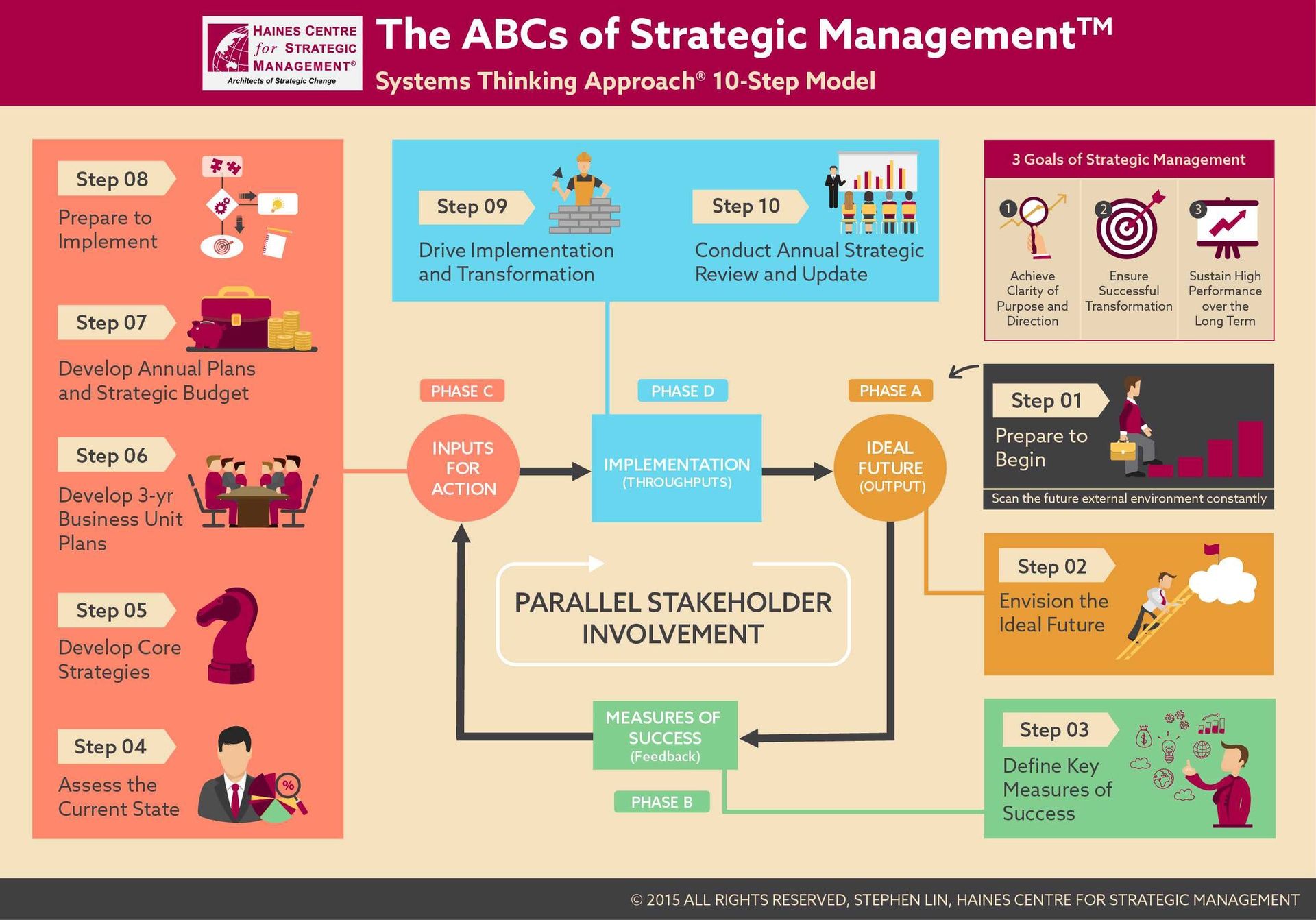7 common problems in strategic planning models
You are here: Home > Blog | Valerie MacLeod
05/07/2023
I recently completed a proposal to teach our The Systems Thinking Approach® to Strategic Management process to the planning professionals in a small company.
I decided to research other Strategic Management models so that I could highlight what they should be aware of when making a choice. Here are some of the common problems I found when looking at other planning models:
- End with Strategic Planning – Most Strategic Planning models end with strategic planning. Once the document is completed then things are done. At the Haines Centre for Strategic Management, our model consists of both strategic planning and change management – which is why we call it strategic management. Once you have completed writing the planning document you are only about 20% completed. Our process goes further than most models. We will teach you how to prepare for the execution of the plan, as well as conduct regular check-ins to keep your organization on track, and hold an annual review and update step to start next year off correctly.
- Don’t use a wholistic model– Our Strategic Management 10-step model is based upon The Systems Thinking Approach®. This ensures that we start with the big picture and you see how your plan fits into the work of the entire organization. This lowers the problems associated with unintended consequences or lack of consultation, and increases the probability of a successful plan execution.
- Don’t prepare for successful planning or execution – Prior to planning and execution, we have steps to ensure success in those phases of the model. Before we start planning we conduct a Prepare to Begin step. Here would we educate, assess, organize and tailor the process for your organization. This would include changing the model’s language to fit the organization’s, ensuring all processes and structures exist so that the planning is successful (like support teams, subject matter expert involvement and defining key stakeholders and their role) and ensuring leadership support throughout the process. It also includes a thorough External Environmental scan. Prior to executing the strategic plan, we hold a Prepare to Implement step. In this step we would educate, assess, organize and tailor around change and execution of the plan. This would include understanding both the human side and the organization structures and processes that need to be involved, updated or added to ensure successful execution of the plan.
- Measure in the wrong place – The majority of planning models measure activities, not success of the execution of plan. We believe in measuring success, not activities. We determine our Key Measures of Success after we have created our Ideal Future (vision, mission and values) and we measure progress towards that Ideal Future. Many models measure late in the planning process, which means they measure activities and actions. While, we believe measures at this level are also important, they are not measures showing we are moving forward towards our vision and mission. Therefore, our Key Measures of Success are defined at the beginning of our Systems Thinking based model before we define programs and activities.
- Conduct a SWOT analysis too soon – You should conduct a current state assessment (which includes SWOT) at the right time in the process. If you conduct a current statement assessment without having a context then you are merely gathering data. In order to have good information on which to make decision in your current state assessment you have to do it in the context of the ideal future and the future environment. Many planning models conduct SWOT too early in the process. We conduct our current state assessment after we have conducted future environmental scanning and determined the Ideal Future. Conducting a current state assessment in the context of your long-term vision and future environment ensures that you are gathering good information about your strengths and weaknesses of achieving those goals.
- Create a strategic plan without input from key stakeholders – Many strategic plans are created in isolation from internal and external stakeholders. We insist that you involve your key stakeholders early in the process. Instead of creating an entire plan and checking with them later (or not at all), we ensure that they are involved “in parallel” with the creation of the plan. This means involving them from the beginning of the process and throughout the creation of the plan. This ensures their support, reduces resistance and also creates a better plan because of the diversity of their perspectives.
- Ignore risk – It is easy to create a strategic plan if you ignore risk. Many models do not consider risks within their process. We reduce risk at multiple places in our model. This includes board and leadership understanding and acceptance of risk, contingency planning and future trend risk assessment.
If you are evaluating multiple strategic management models for your organization, then review where each stands regarding these 7 common problems. Then come talk to use about our approach and how you can apply it within your organization. I’m at Valerie.MacLeod@HainesCentre.com
Further resources:
What our The Systems Thinking Approach® to Strategic Management process looks like

